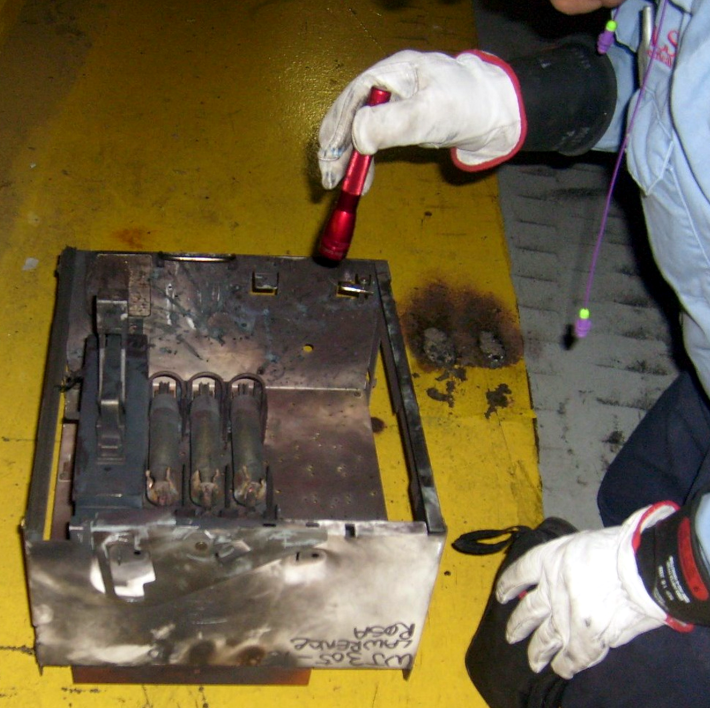With today’s complex electrical distribution systems, shock isn’t the only danger facing those who work around these assets. Another equally severe hazard is arc flash.
What Is an Arc Flash?
An arc flash is a sudden, destructive – and completely uncontrollable – electric arc that occurs in the air space between electrical devices. What happens during an arc flash incident?
- There’s a blinding flash of light.
- In a millisecond, the temperature inside this flash soars to as high as 35,000°F.
- A dynamite-level explosion occurs, accompanied by a sound wave that can exceed 160 dB.
- Vaporized metal and shrapnel from disintegrating equipment expel at the speed of a bullet.
The Devastating Results
For those unprepared for it, the results of an arc flash can be devastating:
- Death or serious injury to personnel
- Wrecked equipment and ruined products
- Litigation fees, insurance claims, and regulatory fines
- Emotional trauma and a damaged reputation
D.L. Steiner’s Arc Flash Safety Program
Fortunately, with D.L. Steiner’s Arc Flash Safety Program, you can defend against devastating arc flash incidents. Our program offers a turnkey safety solution that protects your people and equipment, meets the mandates of NFPA 70E and OSHA, and safeguards the long-term future of your organization. The program consists of these standard and recommended project phases:
Data Collection, NEC Safety Audit – Obtaining all electrical system data needed for study and analysis. Includes an NEC-level safety audit of your electrical system.
System Modeling and Studies – Building a digital model of your electrical system and using the model to conduct three essential studies: Short Circuit Study; Protective Device Coordination Study; Arc Flash Hazard Analysis.Single-Line Diagram, Study Report – Producing up-to-date drawings of your electrical system and a comprehensive written evaluation of its condition. The report includes recommended actions for mitigating identified system issues.

Label Creation, Installation – Creating and installing durable, UV-resistant safety labels listing the shock and arc flash hazards of their associated electrical system devices.
Arc Flash Mitigation, PPE Recommendations – Providing guidance in mitigating electrical dangers within the system and in selecting the PPE clothing and tools your qualified personnel should use.
NFPA 70E Safety Training (highly recommended) – Conducting live NFPA 70E electrical safety training either at your facility or remotely via webinar.
Safety Program Development (highly recommended) – Developing an NEC-based electrical safety program (ESP) that complies with OSHA regulations and consensus industry standards for electrical safety.
ReBEEMS EPPM Program (highly recommended) – Providing access to ReBEEMS, D.L. Steiner’s Internet–based EPPM application. ReBEEMS gives you 24/7/365 worldwide digital access to your electrical system data (single lines, study reports, test records, etc.) via any device with a web browser.
Implement a Complete Arc Flash Safety Solution
D.L. Steiner’s Arc Flash Safety Program addresses every issue critical to effective arc flash hazard analysis – and true arc flash hazard safety. All program phases are completed by our own in-house engineers and technicians. And each program undergoes a final review by a licensed PE to ensure its accuracy.
The result? You implement a complete solution for mitigating the hazards of arc flash incidents in your workplace!
Ready to Improve Your Energy System Health?
Tell us about your needs and a D.L. Steiner representative will contact you.
